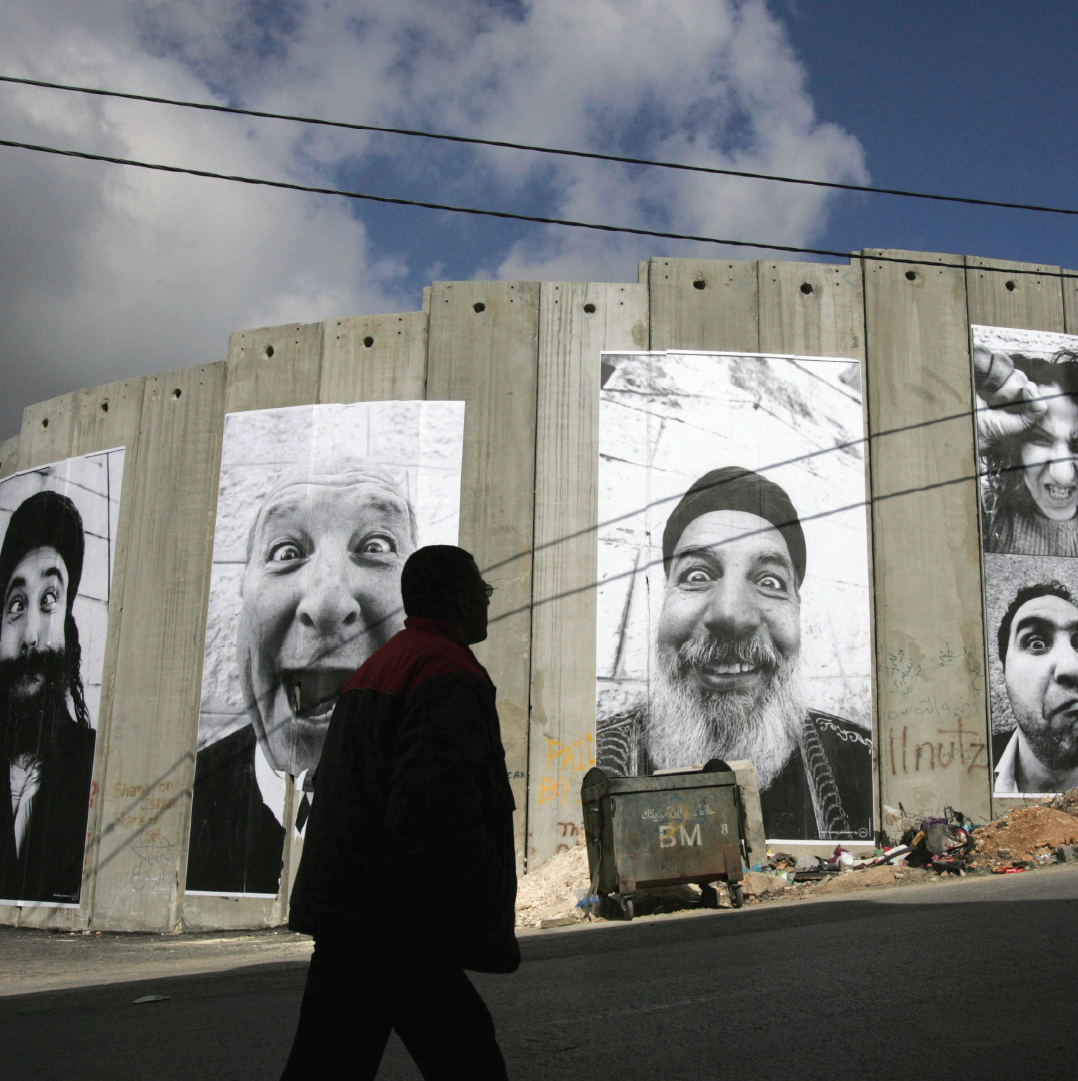Chapter 6
Serene smiles. Goofy grins. Contorted grimaces. Giant posters of people making such faces have been popping up all over the globe for the last several years—from southern Sudan to the Standing Rock Indian Reservation in North Dakota. Most are pasted illegally onto the sides of buildings, bridges, and walls; on public staircases; and even on trains and buses. Who’s behind these displays? Renegade French artist JR.1 When asked about the meaning of his work and what he is hoping to achieve through it, he notes that his work can change people’s perceptions of one another in powerful, positive ways. How? When you see these people making faces, you also see their humor, personalities, and willingness to poke fun at themselves. You see them using non-verbal behaviors to communicate. Suddenly, people who might have seemed strange and different from you seem silly, similar, and likable.
JR’s art installations are collaborative group projects. For a project entitled Face2Face, JR photographed Israelis and Palestinians who did the same jobs—taxi drivers, lawyers, and cooks. He then pasted the images side by side in various Israeli communities. As he describes, “The experts said no way—the people will not accept it. But they did. When you paste an image it’s just paper and glue. People can tear it, tag on it, the people in the street are the creator. The rain and the wind will take them [the images] off anyway. They’re not meant to stay. But it’s now four years after, and most of them are still there. Face2Face demonstrated that what we thought was impossible was possible.”
Wherever they are pasted, JR’s installations are immediately recognizable, because they focus on close-up images of the human face. JR uses a wide-angle lens to photograph his subjects, which requires him to stand just a few inches away from them—an intimate distance requiring trust. He then has people “make faces” that represent themselves—communicating vivid and intense messages of identity and emotion. As he describes, “I ask people to make a face as a sign of commitment—not a smile that really doesn’t tell who you are or what you feel.”
In 2011, JR received the prestigious TED Prize, which recognizes “an extraordinary individual with a creative and bold vision to spark global change” (ted.com, n.d.). His latest project, Inside Out, involves people submitting self-portraits, which he then prints on enormous posters and sends back, so that contributors can paste them wherever they want. Inherent to Inside Out is JR’s ongoing recognition of the power of nonverbal communication to impact people’s impressions. As he notes, “The idea is that you have to stand for what you care about. It is easy on Facebook to say ‘I love this’ or ‘I’m against that.’ But to stand for your own image in the street? That’s another level.”

As the artwork of JR spotlights, your nonverbal communication powerfully impacts people’s impressions of you. Something as simple as a grin or a scowl can make the difference between people liking or not liking you, approaching or avoiding you. This makes learning about, taking control of, and improving your nonverbal communication incredibly important. When you take the time to better understand nonverbal communication and strengthen your skills, the potential payoff is enormous. Nonverbal communication ability is related to higher levels of self-esteem and life satisfaction, perceptions of attractiveness and popularity, greater interpersonal influence in situations requiring persuasive ability, and higher relationship satisfaction (Burgoon & Hoobler, 2002; Carton, Kessler, & Pape, 1999; Hodgins & Belch, 2000). In this chapter, you’ll learn:
- The characteristics that define nonverbal communication
- How to use different types of nonverbal communication
- The functions of nonverbal communication
- Ways to improve your nonverbal communication skills